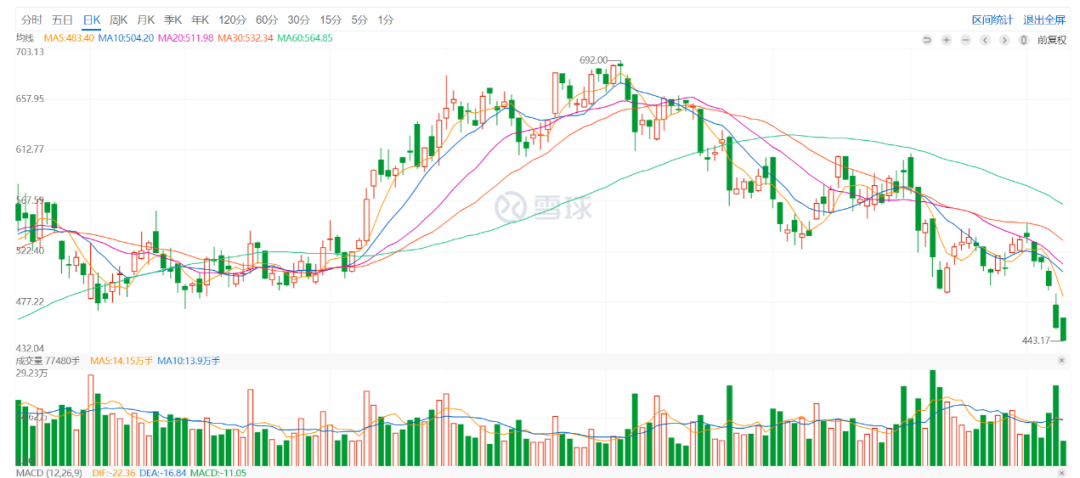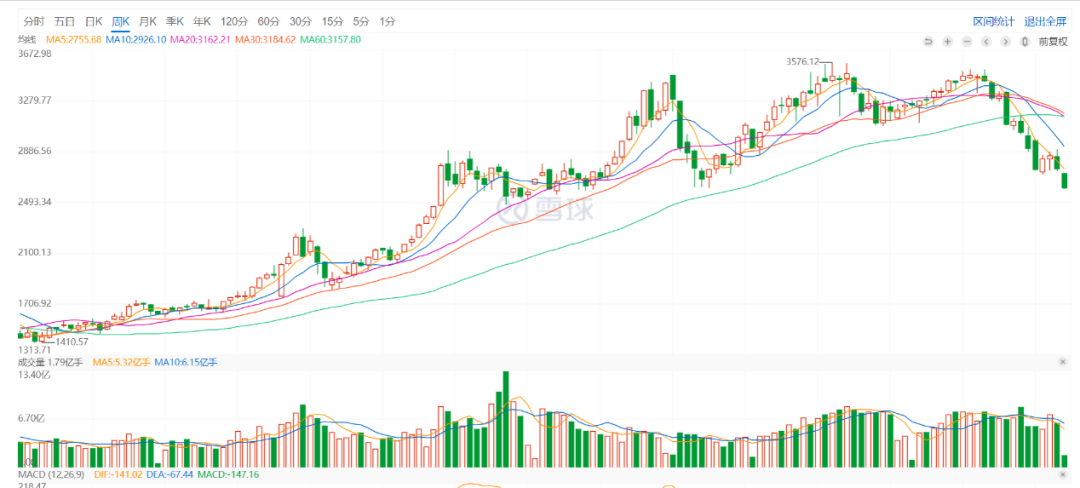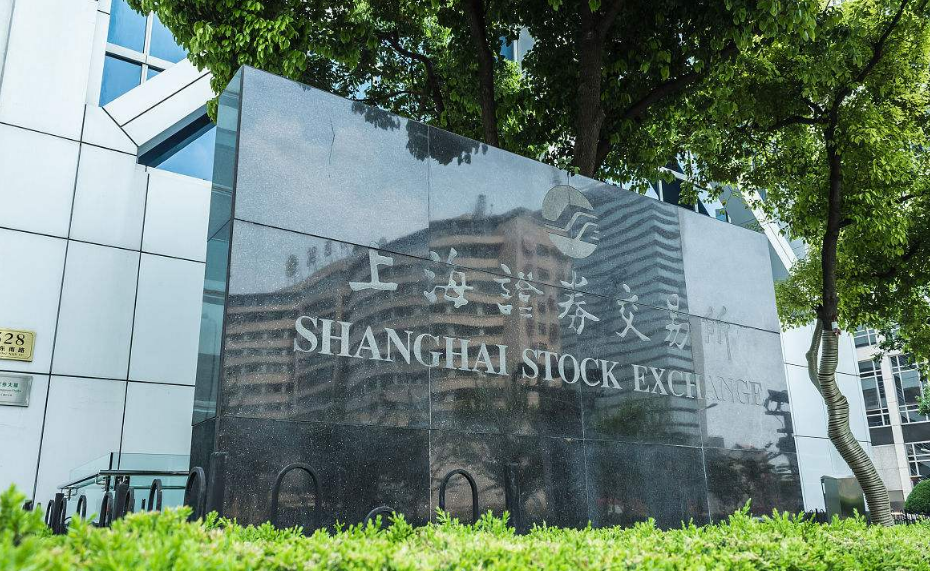文 | Finance Street’s Lao Li
The growth sector of A shares, led by Ningde Times, has suffered a major setback. Yesterday, after a small rebound during the “two sessions” (the annual meetings of China’s top legislative and advisory bodies), the three major indexes of A shares continued to decline. The bellwether of the ChiNext board and the leader of growth stocks, Ningde Times, fell sharply by 7.5%, closing at 454.89 yuan per share, creating a new low for the year. Since the first quarter, Ningde Times has accumulated a decline of more than 22%, which is two percentage points higher than the decline of the ChiNext board during the same period. This 22 percentage points also represent the largest quarterly decline since Ningde Times went public.
Lao Li has previously discussed in “Ningde Times: Still the “King of Ning”?” that the fundamentals of Ningde Times have not changed in the past few months, and the performance in 2021 is still impressive. It is expected to achieve a net profit attributable to shareholders of 14 to 16.5 billion yuan, a year-over-year increase of 150.75% to 195.52%. This is the best profit level since Ningde Times was founded, and the net profit has set a new record for three consecutive years.

One month after the performance forecast was released, the fundamentals of Ningde Times actually showed an upward trend. Firstly, the financial report of Ningde Times exceeded expectations. Secondly, the overall market for new energy vehicles continued to develop well, despite a month-on-month decline in February, Ningde Times’ 30% growth rate this year is relatively stable. Thirdly, the market share of Ningde Times’ power batteries still maintains a high level of around 50%.
From the perspective of the overall trend, since the first quarter, the fundamentals and market value performance of Ningde Times have shown a “divergence” state. In fact, it is not only Ningde Times, but also the fundamentals and market value performance of the entire ChiNext board that are in a “divergence” state. The new energy vehicle sector, photovoltaic sector, and CXO sector of the ChiNext board have all exhibited typical “divergences”. However, as the bellwether of the ChiNext board, Ningde Times’ performance is more obvious.
Who is selling Ningde Times? It is private/public equity funds and northbound funds that had previously earned ample returns. The holdings disclosed by Allianz China A-share Fund also showed that the reduction of holdings of Ningde Times in January reached 10.56%. Recently, northbound funds have also been in a state of cumulative selling, with a net cumulative selling of Ningde Times reaching 1.457 billion yuan in five consecutive days.

There is no such thing as a perfect company. In fact, not only the ChiNext board, but also the leading companies of the main board are facing “divergences”.Last night, Guizhou Maotai released better-than-expected performance indicators. The market expected the growth rate of Guizhou Maotai to be 10-15%, while the financial report forecasted it to be 20%, exceeding expectations by 5-10 percentage points. The 20% growth rate of consumer stocks does not correspond to a 30 times valuation, indicating that Guizhou Maotai is not expensive compared to its historical prices. However, the market is currently extremely irrational, and although there was a small increase today, Guizhou Maotai has been continuously falling for a month. It should be noted that in a rational market environment, with the better-than-expected financial reports of Ningde Times and Guizhou Maotai, there would be at least a week of continuous increase.
Today, along with many industry researchers, Mr. Li believes that the current situation can only be handled by waiting instead of making phone calls or research. We know that industry researchers often study the fundamentals, but when it comes to narrow liquidity and macro-level aspects, strategy researchers and macro researchers need to take action. Mr. Li can responsibly say that the significant declines of Ningde Times and the ChiNext board have almost no relation to the company’s fundamentals or industry factors, but are completely due to changes in the capital market.
Regarding yesterday’s sharp decline, there are many market opinions, and Mr. Li believes that there were mainly several reasons that caused the decline:
The first is that the escalation of the Ukraine-Russia conflict has increased the impact of peripheral weights. Recently, the market has been discussing the impact of the Ukraine-Russia conflict, which has had a huge impact on overseas markets. In the past few days, northward capital has been flowing out due to overseas interest rate hikes and high inflation, combined with domestic institutions’ selling, creating a negative cycle. It should be noted that external factors are the secondary cause of the market downturn, not the main cause.
The second reason is the impact of better-than-expected GDP growth rate on sector rotation. The 5.5% GDP growth rate during the two sessions exceeded expectations, which has a negative impact on the growth sector. This means that the opportunity cost of growth stocks, represented by new energy vehicles, rises. Therefore, yesterday the market tacitly agreed that new energy vehicles needed to lower their valuations, and it was certain to sell the leading enterprises, namely Ningde Times. Therefore, Ningde Times became the selling object. When the market reaches a consensus for selling, even the strongest Ningde Times cannot withstand the selling frenzy.
Many friends may ask, after selling Ningde Times, what did everyone buy? This is a good question. The 5.5% GDP growth rate means stable growth, and the direction is certain, which is to focus on the three pillars driving the economy. However, the problem is that although everyone knows to buy the three pillars, they do not know which target to buy, and the market has not formed a consensus expectation. Therefore, the choice that the fund faced yesterday was either not to buy or to buy safe-haven categories. Therefore, on yesterday’s trading day, except for safe-haven products like gold, all other products fell.
The third reason is that public funds did not have incremental funds and sold growth stocks.# The Translation in English Markdown
As Li mentioned before, the secondary market competes for incremental funds. When incremental funds are abundant, the market will naturally rise. However, the current problem is that the market lacks incremental funds. In the case of stock funds, head stocks and heavyweight stocks have no opportunity. The more institutionalized the sectors are, the easier they are to sell. So no matter how good the fundamentals are, as long as the stock is institutionalized, it will drop. On the other hand, small market capitalization stocks with fewer institutional support did not sell off.

The domestic market has always switched between high prosperity/low prosperity, large market value/small market value, and value stocks/growth stocks. When the market has incremental funds, public funds will buy growth stocks. When the market has stock funds, public funds will sell growth stocks. After the continuous increase of the social finance, there is no lack of funds in the society. The broad liquidity is also good. However, these funds did not enter the stock market. When funds enter the stock market, the market will have a new turning point.
At this point, many friends will ask, what to do next? Li’s answer is to wait, like many researchers, to use static braking. Li taught everyone a method: look at weekly K-line charts more and reduce the psychological impact of short-term volatility. In the domestic market, there are several unwritten principles:
First, the domestic market has actually been rising. In the past decade, the annual average growth rate of Wind A-share index was 10%, which many friends find it hard to believe.
Second, opportunities arise from drops. Li previously said that if you want to exceed an average annual return of 10%, you must find structural markets. When the market falls, opportunities are easy to find.
From a rational perspective, slow rising market will inevitably follow big drops. Why have there been growth opportunities in the domestic market in the last three years? The fundamental reason is that in the second half of 2018, the market hit the bottom in a slow bear market, and many leading companies that year also hit the low of historical valuation; in 2020, the pandemic caused international oil prices to fall to 10 dollars, or even negative, but now it has risen to 120 dollars.
Instead of panicking with the market at this time, it is better to use static braking and look for long-term opportunities offered by the market’s collapse.

Third, actively seeking financial report market trends. As mentioned earlier, the fundamentals of many growth stocks are good. If the quarterly report exceeds expectations for some companies, under the condition of holding by stock funds, institutions can also form groups to generate profitable effects, and then attract incremental funds to form a small spring trend.In the domestic market, there has never been a “evergreen tree”. Whether it is Guizhou Maotai or Ningde Times, they represent a specific period of development. Ningde Times is just in the process of growing up. Today’s growing Ningde Times will also become the valuable Ningde Times of tomorrow. In the transition between industries, Ningde Times is like a milestone, standing on the development path of the times.
This article is a translation by ChatGPT of a Chinese report from 42HOW. If you have any questions about it, please email bd@42how.com.
